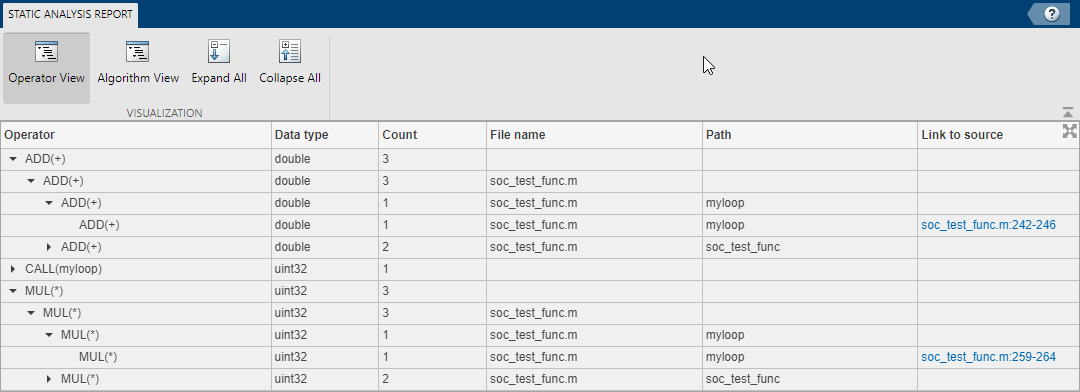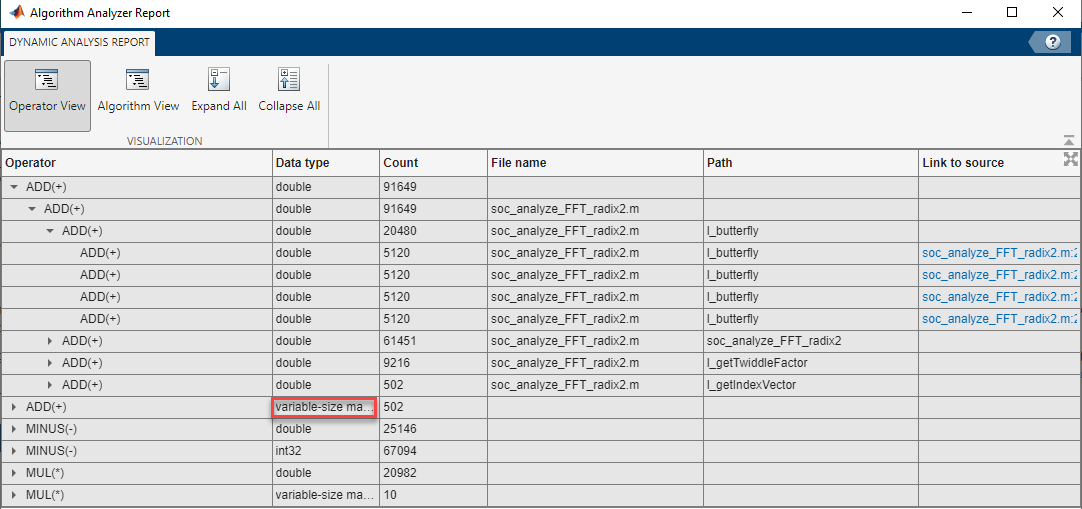socFunctionAnalyzer
Estimate number of operations in MATLAB function
Syntax
Description
socFunctionAnalyzer( generates a
report with the estimated number of operations in the MATLAB® function specified by functionName)functionName.
The function generates the report as a Microsoft® Excel® spreadsheet and a MAT-file. The function also provides a link to view the report in a separate dialog box.
The report includes information for each mathematical or logical operator in the
function, with individual lines for each operator and data type. For example, multiplication
with data type double and multiplication with data type
uint32 are listed separately. The report lists each instance of the
operator as a separate line. The report includes these fields.
Path– The path to the operator within the structural hierarchy of the top functionCount– The number of times the operator is executed in the designOperator– The operator usedDataType– The data type used for the output of the operatorLink– A link to the location of the operator in the function
For more information, see Using the Algorithm Analyzer Report.
socFunctionAnalyzer(
specifies options using one or more name-value arguments. For example,functionName,Name=Value)
IncludeOperator='+' specifies that the generated report only includes
'+' operator counts.
report = socFunctionAnalyzer(___)



